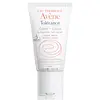What's inside
What's inside
 Key Ingredients
Key Ingredients

No key ingredients
 Benefits
Benefits

 Concerns
Concerns

 Ingredients Side-by-side
Ingredients Side-by-side

Water
Skin ConditioningEthyl Macadamiate
Skin ConditioningGlycerin
HumectantCetearyl Alcohol
EmollientPropanediol
SolventTriethylhexanoin
MaskingSodium Acrylates Copolymer
Glyceryl Stearate
EmollientPEG-100 Stearate
Glycyrrhiza Glabra Root
Skin ConditioningHydrolyzed Pumpkin Seedcake
Skin ProtectingVaccinium Angustifolium Fruit Extract
Skin ProtectingEuterpe Oleracea Fruit Extract
Prunus Serotina Fruit Extract
MaskingNiacinamide
SmoothingTripeptide-29
Skin ConditioningCeramide NP
Skin ConditioningCeramide AP
Skin ConditioningCeramide EOP
Skin ConditioningSodium Hyaluronate
HumectantPhytosphingosine
Skin ConditioningCholesterol
EmollientPanthenol
Skin ConditioningSodium PCA
HumectantAdenosine
Skin ConditioningLecithin
EmollientArginine
MaskingSodium Lauroyl Lactylate
EmulsifyingSodium Gluconate
Skin ConditioningCitric Acid
BufferingIsohexadecane
EmollientXanthan Gum
EmulsifyingCarbomer
Emulsion StabilisingPhenoxyethanol
PreservativeEthylhexylglycerin
Skin ConditioningWater, Ethyl Macadamiate, Glycerin, Cetearyl Alcohol, Propanediol, Triethylhexanoin, Sodium Acrylates Copolymer, Glyceryl Stearate, PEG-100 Stearate, Glycyrrhiza Glabra Root, Hydrolyzed Pumpkin Seedcake, Vaccinium Angustifolium Fruit Extract, Euterpe Oleracea Fruit Extract, Prunus Serotina Fruit Extract, Niacinamide, Tripeptide-29, Ceramide NP, Ceramide AP, Ceramide EOP, Sodium Hyaluronate, Phytosphingosine, Cholesterol, Panthenol, Sodium PCA, Adenosine, Lecithin, Arginine, Sodium Lauroyl Lactylate, Sodium Gluconate, Citric Acid, Isohexadecane, Xanthan Gum, Carbomer, Phenoxyethanol, Ethylhexylglycerin
 Reviews
Reviews

Ingredients Explained
These ingredients are found in both products.
Ingredients higher up in an ingredient list are typically present in a larger amount.
Glycerin is already naturally found in your skin. It helps moisturize and protect your skin.
A study from 2016 found glycerin to be more effective as a humectant than AHAs and hyaluronic acid.
As a humectant, it helps the skin stay hydrated by pulling moisture to your skin. The low molecular weight of glycerin allows it to pull moisture into the deeper layers of your skin.
Hydrated skin improves your skin barrier; Your skin barrier helps protect against irritants and bacteria.
Glycerin has also been found to have antimicrobial and antiviral properties. Due to these properties, glycerin is often used in wound and burn treatments.
In cosmetics, glycerin is usually derived from plants such as soybean or palm. However, it can also be sourced from animals, such as tallow or animal fat.
This ingredient is organic, colorless, odorless, and non-toxic.
Glycerin is the name for this ingredient in American English. British English uses Glycerol/Glycerine.
Learn more about GlycerinWater. It's the most common cosmetic ingredient of all. You'll usually see it at the top of ingredient lists, meaning that it makes up the largest part of the product.
So why is it so popular? Water most often acts as a solvent - this means that it helps dissolve other ingredients into the formulation.
You'll also recognize water as that liquid we all need to stay alive. If you see this, drink a glass of water. Stay hydrated!
Learn more about Water